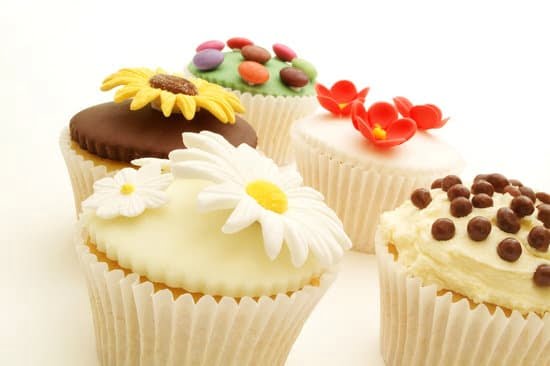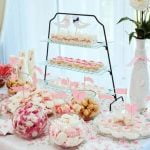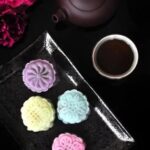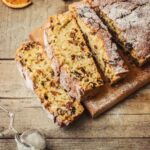Easter is a time of celebration, and one of the most beloved traditions during this holiday is the decoration of Easter cakes. This culinary art form has deep roots in various cultures and holds significant symbolism in the festivities. From traditional recipes passed down through generations to modern interpretations, Easter cakes are a delightful way to express creativity and reverence for this special occasion.
Throughout history, Easter cakes have played a vital role in the celebration of the holiday, with different cultures adding their unique flair to these delectable treats. The symbolism behind Easter cakes often reflects themes of rebirth, renewal, and abundance, making them an integral part of the Easter tradition. As we delve into this topic, we will explore the rich history and cultural significance attached to these festive confections.
In this article, we will take a closer look at the various types of Easter cakes from around the world-ranging from traditional to contemporary creations. Additionally, we will provide essential tips on how to decorate Easter cakes using a variety of techniques and design ideas that capture the spirit of this joyous season.
Whether you’re an experienced baker or new to cake decorating, there’s something for everyone as we embark on this journey through the delightful world of Easter cake decoration.
Different Types of Easter Cakes
Easter cakes are an essential part of the celebration of Easter in many parts of the world. They come in a variety of forms, each with its own unique flavors and cultural significance. From traditional recipes that have been passed down through generations to modern variations that cater to contemporary tastes, there are countless types of Easter cakes to explore and enjoy.
Traditional Easter Cakes
In different cultures, there are specific types of cakes that are commonly associated with Easter. For example, in Italy, Colomba di Pasqua is a traditional dove-shaped cake that symbolizes peace and renewal. In Greece, Tsoureki is a sweet bread flavored with orange zest and spices, often decorated with dyed eggs. These traditional Easter cakes often have deep-rooted meanings and play important roles in religious and cultural traditions.
Modern Easter Cake Variations
While traditional Easter cakes hold significant cultural value, modern variations have also gained popularity. From rich chocolate cakes adorned with colorful spring flowers to light lemon cakes topped with citrus glazes, the possibilities for modern Easter cake creations are endless. These variations often reflect current culinary trends and personal preferences, allowing for experimentation and creativity when it comes to baking and decorating.
Explore Recipes From Around the World
To truly appreciate the diversity of Easter cakes, it’s important to explore recipes from various countries and regions. By experimenting with different ingredients and baking techniques, you can discover new flavors and textures that may inspire your own unique interpretation of an Easter cake. Whether you’re drawn to the richness of a German Osterlamm or the simplicity of a British Simnel cake, there are countless options to consider when planning your Easter dessert menu.
As you prepare for the upcoming holiday season, take some time to explore different types of Easter cakes from around the world. Whether you choose to honor tradition or venture into uncharted culinary territory, the process of baking and decorating an Easter cake can be a meaningful way to celebrate the spirit of renewal and new beginnings.
Essential Ingredients for Decorating Easter Cakes
Easter cakes are an essential part of the Easter celebration in many cultures and traditions around the world. Whether it’s the hot cross buns in the UK, the Paska bread in Eastern Europe, or the Simnel cake in Ireland, these baked goods hold significant meaning and symbolism. One common element among these different types of Easter cakes is their decorative appearance. It is traditional to decorate easter cakes to represent new life and the joy of spring.
When it comes to decorating Easter cakes, there are several essential ingredients that can help bring your creation to life. Fondant is a popular choice for creating smooth, flawless finishes on cakes and can be shaped and molded into various designs related to Easter such as flowers, bunnies, and eggs.
Piping gel is another important ingredient that can be used for creating intricate details or writing messages on the cake. Edible flowers can add a touch of natural beauty while sprinkles can provide a burst of color and texture.
To ensure the best results when decorating Easter cakes, it’s important to use high-quality ingredients and tools. Working with fresh fondant will make it easier to mold and shape into different designs. Using piping gel with a fine nozzle tip will allow for precise detailing on your cake. When choosing edible flowers, ensure they are well-suited for consumption and free from pesticides.
In addition to these ingredients, having a good selection of food coloring can also contribute to creating vibrant designs on your Easter cake. By using natural food coloring made from fruits and vegetables, you can achieve beautiful pastel hues that are fitting for the holiday theme. With these essential ingredients at hand, you’ll be well-equipped to embark on your Easter cake decorating journey.
| Essential Ingredients | Use |
|---|---|
| Fondant | Create smooth finishes and mold into various designs |
| Piping Gel | Create intricate details or write messages on the cake |
| Edible Flowers | Add a touch of natural beauty |
| Sprinkles | Provide bursts of color and texture |
Decorating Techniques for Easter Cakes
Icing
The most common and traditional decorating technique for Easter cakes is using icing. This versatile medium allows for intricate designs, smooth finishes, and vibrant colors. Icing can be used to create a variety of Easter-themed designs such as flowers, eggs, and bunnies. To achieve the best results with icing, it’s important to use the right consistency and temperature. Additionally, having the proper tools such as piping bags and tips will greatly aid in creating beautiful decorations.
Piping
Piping is another popular decorating technique for Easter cakes. With piping, decorators can add delicate details and intricate patterns to their cakes. This method is often used for creating borders, writing messages, and adding fine details to cake designs. Different types of piping tips can produce various effects, from simple lines to ornate embellishments. Learning different piping techniques will allow decorators to achieve professional-looking results on their Easter cakes.
Fondant Sculpting
Fondant sculpting has gained popularity in recent years as a modern decorating technique for Easter cakes. Fondant allows decorators to create 3D shapes, figurines, and designs that simply cannot be achieved with icing alone. Using fondant molds and sculpting tools, decorators can craft intricate decorations like miniature Easter baskets, adorable bunny figures, or lifelike floral arrangements. Mastering fondant sculpting opens up a world of creative possibilities for Easter cake decoration.
By mastering these decorating techniques for Easter cakes, both novice and experienced decorators can elevate their cake designs to the next level. Whether opting for classic icing work or experimenting with modern fondant sculpting, there are countless ways to decorate Easter cakes creatively and beautifully while celebrating this joyous holiday.
Easter Cake Design Ideas
When it comes to decorating Easter cakes, there are countless creative design ideas to consider. One popular option is to create an Easter bunny-themed cake, complete with fondant or icing ears, eyes, and a cute little nose.
Another fun idea is to make an egg-shaped cake and decorate it with colorful frosting and edible sprinkles to mimic a traditional Easter egg. Additionally, incorporating fresh flowers into the cake design can add a beautiful and natural touch to your creation.
For those looking for more unique and unconventional designs, consider crafting a nest-themed cake adorned with edible chocolate eggs, or a cross-shaped cake decorated with delicate sugar flowers. The possibilities are truly endless when it comes to decorating Easter cakes, so don’t be afraid to let your imagination run wild.
Incorporating fresh flowers into the decoration of Easter cakes not only adds a pop of color but also brings a sense of nature and elegance to the dessert. Edible flowers such as violets, pansies, and roses are perfect for adorning Easter cakes, giving them a whimsical and enchanting touch. Whether you choose to use fresh flowers as the main decoration or simply as accents on your cake, they are sure to impress your guests.
Lastly, another design idea that has been gaining popularity is the use of pastel colors in decorating Easter cakes. Pastel shades like soft pink, mint green, pale blue, and light yellow can be used in combination to create a dreamy and ethereal aesthetic for your Easter cake. Whether you opt for intricate piping details or simple buttercream rosettes in pastel hues, this design idea is guaranteed to exude elegance and charm at any Easter celebration.
| Easter Cake Design Ideas | Main Identifiers |
|---|---|
| Easter Bunny-Themed Cake | Complete with fondant or icing ears, eyes, and nose |
| Egg-Shaped Cake | Decorated with colorful frosting and edible sprinkles |
| Nest-Themed Cake | Adorned with edible chocolate eggs |
Tips for Successful Easter Cake Decoration
When it comes to decorating Easter cakes, there are a few tips and tricks to keep in mind to ensure successful results. Whether you’re a beginner or an experienced baker, these tips will help you create beautifully decorated Easter cakes that will impress your friends and family.
Firstly, it’s important to have the right tools and equipment on hand for decorating Easter cakes. Some essential tools include piping bags, cake turntables, and decorative tips. Investing in high-quality tools will make the decorating process much easier and more enjoyable. Additionally, having a good set of basic decorating tools will allow you to try out different techniques and styles when decorating your Easter cake.
In addition to having the right tools, it’s crucial to plan your design beforehand. Before you start decorating, take some time to sketch out your design ideas and gather the necessary ingredients for each element of your design. Planning ahead will help you stay organized and focused during the decorating process, resulting in a more cohesive and visually appealing Easter cake.
Another important tip for successful Easter cake decoration is to practice patience and attention to detail. Decorating a cake can be a delicate and intricate process, so taking your time and paying attention to small details is key. Whether you’re using icing, piping, or fondant sculpting techniques, precision is essential for achieving professional-looking results.
By keeping these tips in mind as you decorate your Easter cakes, you’ll be well on your way to creating stunning confections that not only look beautiful but also taste delicious. So get creative and have fun with your Easter cake decorating endeavors.
- Invest in high-quality decorating tools such as piping bags and decorative tips
- Plan your design beforehand by sketching out your ideas
- Practice patience and attention to detail during the decorating process
Easter Cake Decoration Tools and Equipment
When it comes to decorating Easter cakes, having the right tools and equipment is essential for achieving stunning and professional-looking results. From piping bags to cake turntables, the right supplies can make all the difference in creating intricate designs and adding beautiful details to your Easter cakes. Here are some essential tools and equipment needed for decorating Easter cakes:
1. Piping Bags: Piping bags are a must-have tool for creating detailed designs and intricate patterns on Easter cakes. They allow for precise control when applying icing and can be fitted with different decorative tips to achieve various effects.
2. Cake Turntable: A cake turntable is a rotating platform that allows you to easily access all sides of the cake while decorating. This makes it easier to apply smooth and even layers of icing, as well as create uniform designs around the entire cake.
3. Decorative Tips: Decorative tips are attachments that can be fitted onto piping bags to create different shapes and patterns with icing. From stars and petals to shells and rosettes, decorative tips offer endless possibilities for decorating Easter cakes.
4. Offset Spatula: An offset spatula is a versatile tool for spreading icing evenly across the surface of the cake, as well as smoothing out any imperfections. It’s also helpful for lifting delicate decorations and transferring them onto the cake.
5. Edible Decorations: Edible flowers, sprinkles, pearls, and glitter are just a few examples of decorative elements that can add a pop of color and texture to your Easter cakes. These embellishments can help enhance the overall look of your cake design.
By having these tools and equipment on hand, you’ll be well-equipped to bring your creative Easter cake decoration ideas to life. Whether you’re a beginner or experienced decorator, using high-quality supplies will ensure that your Easter cakes look professionally decorated and truly impressive. Don’t hesitate to invest in these essential items if you’re looking to take your Easter cake decorating skills to the next level.
Step-by-Step Guide to Decorate Easter Cakes
When it comes to decorating Easter cakes, there are several techniques and design ideas that can help elevate your cake from simple to stunning. With the right tools, ingredients, and creativity, you can create a beautiful and festive Easter cake that will impress your friends and family. In this step-by-step guide, we will walk you through the process of decorating an Easter cake from start to finish.
The first step in decorating an Easter cake is to ensure that you have all the necessary tools and equipment. This includes piping bags, decorative tips, fondant sculpting tools, edible flowers, and sprinkles. It’s important to have a clean and organized workspace before you begin decorating your cake to avoid any unnecessary mess or confusion.
Once your cake is baked and cooled, the next step is to prepare it for decoration. This may involve leveling the top of the cake, applying a crumb coat of frosting, or covering the cake in fondant. Depending on the design you have in mind, these initial steps will provide a smooth canvas for your Easter cake decorations.
Next, it’s time to get creative with your decorations. Whether you choose to use icing techniques such as piping or fondant sculpting, the key is to take your time and pay attention to detail.
For example, if you’re creating an Easter bunny-themed cake, use white icing to pipe fluffy bunny tails and pink frosting for their ears. If you’re opting for an egg-themed design, consider using pastel-colored fondant to cut out miniature eggs to adorn the sides of the cake.
Finally, once all of your decorations are applied and set in place on the cake, take a step back and admire your creation. Remember that practice makes perfect when it comes to decorating cakes – don’t be discouraged if your first attempt isn’t exactly what you had in mind. The most important thing is that you put love and effort into making something special for the holiday. Have fun with your Easter cake decorating endeavors.
Conclusion
In conclusion, Easter cakes hold a significant place in the celebration of Easter across various cultures and traditions. The symbolism behind these cakes, from representing rebirth and renewal to the arrival of spring, adds an extra layer of meaning to the festivities. Whether it’s traditional recipes passed down through generations or modern twists on classic flavors, Easter cakes bring joy and sweetness to the holiday.
When it comes to decorating Easter cakes, there are endless possibilities to explore. From intricate piping techniques to whimsical fondant designs, the essential ingredients and tools for decorating Easter cakes offer endless creative opportunities. By following the step-by-step guide provided and experimenting with different design ideas, individuals can tap into their creativity and showcase their unique style through their beautifully decorated Easter cakes.
As we look forward to the upcoming Easter holiday, it’s important to remember that decorating Easter cakes is not only about creating visually stunning desserts but also about embracing the spirit of joy and celebration that comes with this time of year. So, let’s gather our favorite decorating tools, gather inspiration from design ideas, and get ready to decorate Easter cakes with love and enthusiasm. Happy decorating.
Frequently Asked Questions
How to Decorate a Cake for Easter?
Decorating a cake for Easter can be a fun and creative process. Some popular ways to decorate an Easter cake include using pastel-colored frosting, adding festive sprinkles or edible decorations, creating a bunny or chick design with frosting, and incorporating Easter-themed candy or chocolates.
How to Decorate an Easter Basket Cake?
Decorating an Easter basket cake is a whimsical way to celebrate the holiday. To decorate an Easter basket cake, consider using shredded coconut as “grass,” adding colorful jellybeans or chocolate eggs as “eggs,” using green frosting to create a basket weave pattern on the sides, and topping it off with a handle made of chocolate or fondant.
What Can I Put on a Cake Instead of Frosting?
If you’re looking for alternatives to traditional frosting for your cake, consider using whipped cream, ganache, fruit preserves, flavored buttercream, or a glaze made from powdered sugar and citrus juice. These options can add flavor and visual appeal to your cake without the heaviness of traditional frosting.

Welcome to our cake decorating blog! My name is Destiny Flores, and I am the proud owner of a cake decorating business named Cake Karma. Our mission is to provide delicious, beautiful cakes for all occasions. We specialize in creating custom cakes that are tailored specifically to each customer’s individual needs and tastes.





